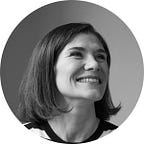It is a common belief that drawing, making lists, writing freely, and coloring help us be healthier. I came across an interesting study where the authors point out that visual self-expression helps to focus attention and improve our health and well-being, but at the same time little research has been done on activating the reward pathway in various visual arts tasks. Simply put, how these feelings of well-being actually arise in the course of these activities.
To their knowledge, the researchers conducted a first experiment examining brain activation using functional near-infrared spectroscopy (fNIRS) during three different drawing tasks.
These tasks were:
- coloring (predetermined mandala);
- scribble (in its own personal style previously used);
- free drawing (whatever drawing the participant wants to make).
Two hypotheses were made:
- Free drawing activates the medial prefrontal cortex the most.
- The sense of creativity improves during drawing tasks.
As a small detour, I feel the need to explain this brain stuff briefly. The prefrontal cortex (PFC) is divided into three functionally distinct sites, all of which are involved in behavioral regulation and short-term memory. Medial PFC is involved in the presence of emotionality, concentration, and overall mobility.
Participants (11 men, 15 women; 8 artists, and 16 non-artists) performed each task separately (3 minutes per task), receiving equal rest time between tasks (resting with closed eyes for 2 minutes). Before and after the tasks, the participants filled in a questionnaire where:
- their sense of creativity was assessed;
- they shared their previous experience with drawing tasks;
- participation in the experiment was reflected.
All three visual arts functions significantly activated the medial prefrontal cortex compared to the resting state. This means that the first hypothesis was not proved.
Interestingly, however, the scribble caused maximum activation of the MPFC compared to coloring and free drawing. In the recall hypothesis, free drawing was set for this purpose. However, the difference between coloroing and free drawing was not statistically significant. At the same time, differences in coloroing and scribbling emerged between artists and non-artists.
Participants in the study improved their well-being and felt more willing to solve problems and generate good ideas. Research has shown that even short creative tasks of self-expression or art, completed in about 15 to 20 minutes, can make people feel that they have good ideas and are able to solve problems. Thus, the second hypothesis was supported.
Of course, this study has its limitations. For example, low number of participants and limited time to complete tasks. However, the outcome of the study is important to show the potential clinical applications of making art in perceiving the reward. Artistic tasks for self-expression can be one way to regulate mood and addictive behavior and to create pleasure.
What do I take with me as a visual facilitator?
Scribbling is usually understood as such arbitrary, meaningless drawing. This has not been considered a very good learning strategy and has been confirmed by experiments. Therefore, I do not popularize any scribble as part of the learning process. But as you can see, this kind of scribble is one of the possible ways to feel better, because it helps to:
- come up with new ideas and thus increase our confidence;
- solve problems and increase our peace of mind.
Thus, scribbling can play a very important role in the development of creativity, entrepreneurship, cooperation, and project learning, where remembering information is not so important as the processes arising from this activity itself. And if it also has a calming and confidence-building component, I would dare say that scribbling has a place in education as well as in important meetings.
References:
- Kaimal, G., Ayaz, H., Herres, J., Dieterich-Hartwell, R., Makwana, B., Kaiser, D. H., & Nasser, J. A. (2017). Functional near-infrared spectroscopy assessment of reward perception based on visual self-expression: Coloring, doodling, and free drawing. The Arts in Psychotherapy, 55, 85–92.
- https://teadvusehuvi.blogspot.com/2011/05/prefrontaalne-korteks.html
